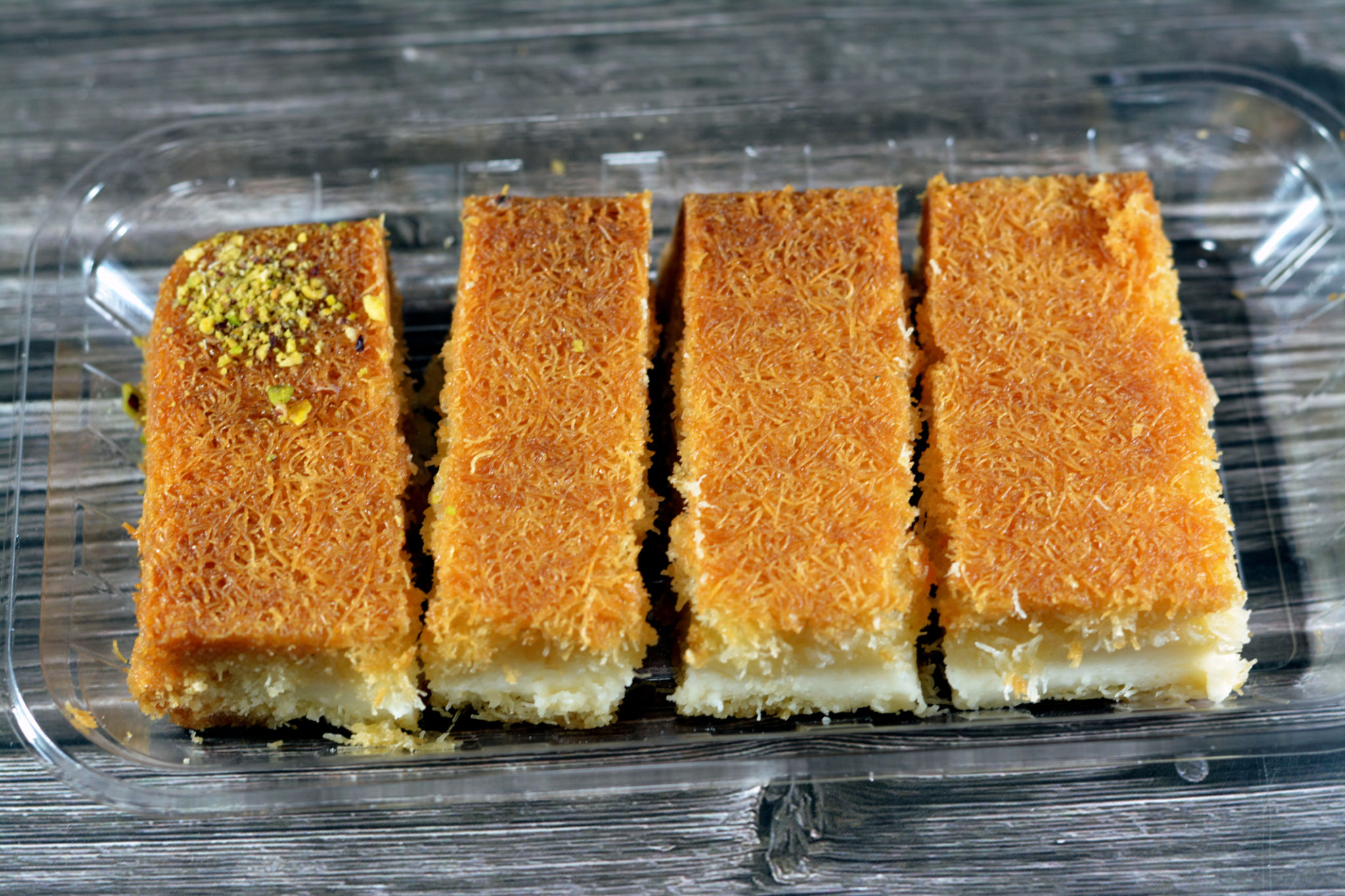Exploring the Rich History of Palestinian Kunafeh
Introduction to Kunafeh
Kunafeh, sometimes spelled as "kanafeh" or "knafeh," is a beloved dessert that holds a special place in Palestinian culture. This sweet, cheese-filled pastry is a staple at celebrations and gatherings, bringing people together with its delicious aroma and delightful taste. Its history is as rich as its flavor, offering a glimpse into the culinary traditions of the region.
The origins of kunafeh are deeply entwined with the history of Palestine. It is believed to have been created in the city of Nablus, which is known for its skilled pastry chefs and indulgent desserts. Over time, kunafeh has become a symbol of Palestinian identity, cherished by locals and admired by food enthusiasts worldwide.

The Ingredients and Preparation
Kunafeh is made with a few key ingredients that come together to create its unique taste and texture. The base is typically a thin noodle-like pastry called kataifi or shredded phyllo dough. This is layered with a filling of soft, white cheese, most commonly a type called Nabulsi cheese, which originates from the Nablus region.
To enhance its sweetness, kunafeh is soaked in a fragrant sugar syrup infused with rose or orange blossom water. The combination of these ingredients creates a perfect balance of flavors, making each bite an experience to savor.
Cooking Techniques
The preparation of kunafeh requires skill and patience. Traditionally, it is cooked over an open flame or in a special round pan, ensuring even heat distribution. The top layer of pastry becomes golden and crisp, while the cheese underneath melts into a gooey delight. Once cooked, the dessert is drenched in syrup and often garnished with crushed pistachios for added texture.

Cultural Significance
Kunafeh is more than just a dessert; it is a cultural symbol that represents hospitality and tradition. In Palestinian households, offering kunafeh to guests is a gesture of warmth and generosity. It is also a common feature at weddings, religious festivals, and family gatherings, where it serves as a sweet reminder of shared heritage.
In recent years, kunafeh has gained international popularity, with variations appearing in Middle Eastern restaurants around the world. Despite its growing fame, the traditional Palestinian kunafeh remains a cherished recipe passed down through generations.
Modern Variations
While the classic kunafeh recipe remains unchanged in many Palestinian homes, modern variations have emerged to suit diverse palates. Some versions incorporate different cheeses or add unique toppings like berries or chocolate. These adaptations showcase the versatility of kunafeh while maintaining its core essence.

Conclusion
Exploring the history of Palestinian kunafeh reveals more than just a dessert; it uncovers stories of tradition, community, and cultural pride. This sweet treat continues to bring joy to those who taste it and serves as a delicious link to the past. Whether enjoyed in its traditional form or as part of a modern twist, kunafeh remains an integral part of Palestinian culinary heritage.
As you savor each bite of kunafeh, remember the rich history behind this delectable pastry and the generations of artisans who have perfected its recipe. It's more than just food—it's a slice of culture that continues to connect people across time and borders.
